In Delaware, it is possible to spot 5 different species of Finches. These are:
- American Goldfinch
- House Finch
- Purple Finch
- Pine Siskin
- Red Crossbill
Want to learn more? This book on everything to do with Finches is a fantastic read!
As Delaware sits on the northeast coast of the United States, it benefits from a good blend of coastal wind, midland forests, and Canadian air to make it a good home for many of our airborne muses.
Finches gather in the so-called ‘Blue Hen State’ in sporadic numbers, but consistently enough that at least one species is visible in most places at any time of year.
The following provides more details on the where and the how, so you can have more luck birdwatching finches in Delaware.
Want to attract finches? Take a look at our article!
What Finches can be seen in Delaware?
1. American Goldfinch
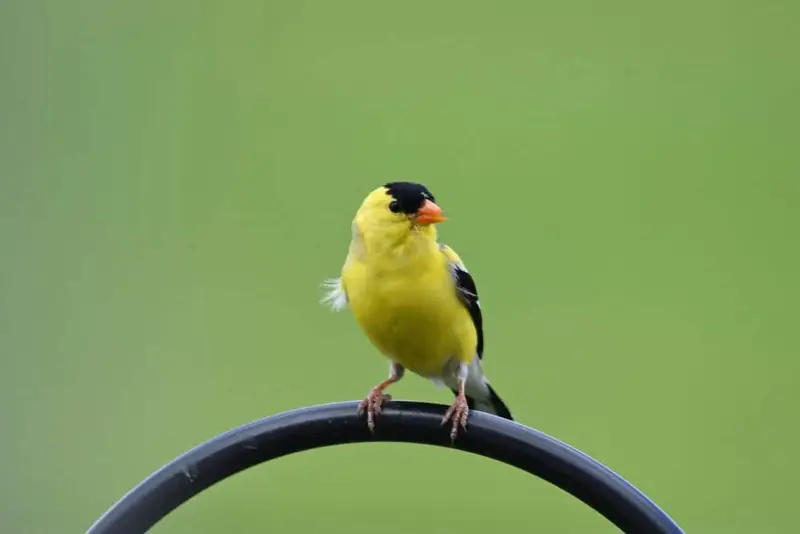
As its name implies, the American Goldfinch maintains a year-round presence in all the mainland US states (as well as Alaska).
Ironically, the term ‘American’ more likely infers ‘North America’, since this bird breeds almost exclusively in Canada before spreading all the way to Central America as the weather turns cold.
A typical specimen is easy to spot despite its diminutive size, with stark black wingtips and mask the only interruption to its otherwise radiant yellow plumage.
They like to rummage on the ground in search of seeds and berries, but are just as keen to leaping from branch to branch on small trees.
American Goldfinches often present in flocks in the winter, and are not averse to visiting bird feeders if daisy seeds or a similar treat is presented.
2. House Finch
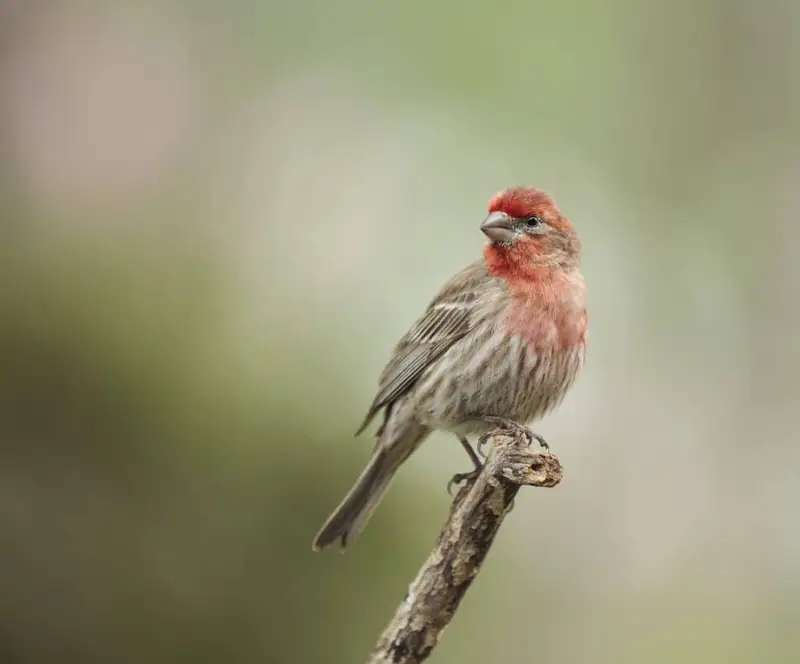
These once-domesticated finches–hence the name–were imported to New York City in America’s youth.
When the keeping of such birds was outlawed, they spread throughout North America, so it makes sense to see higher concentration in places near N.Y. like Delaware.
As suspected, a house finch’s amicable past with people makes it the quintessential backyard feeder, comfortable in any neighborhood where there are trees and seeds.
You can recognize the male by the sharp contrast between its red face, crown, and chest compared to the silver-gray of the rest of its body and wings.
Many grays will be closer to white on the stomach. Females are of the same silver-gray and white combination, except they are all gray with no hint of red.
3. Pruple Finch
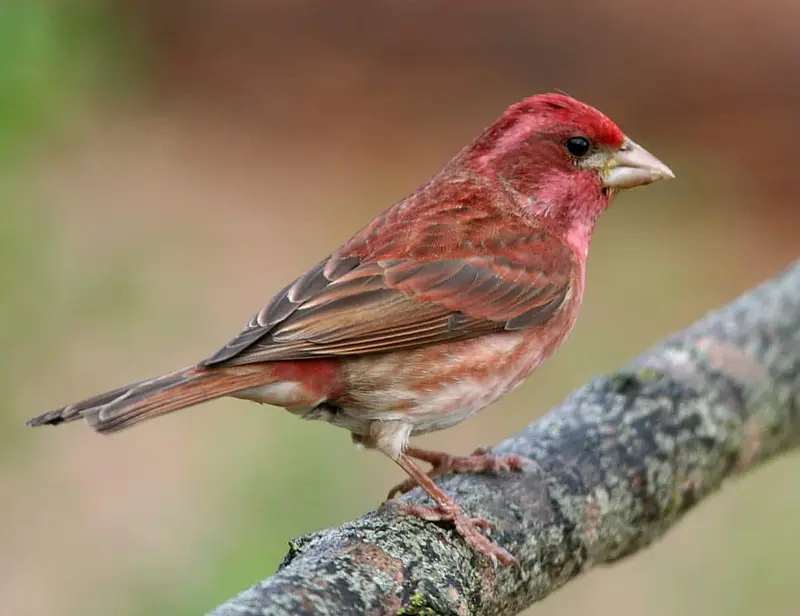
This finch is an occasional wintertime visitor to the state, where many will have a consistent enough presence to be considered a seasonal resident.
Like many “arctic” birds, the purple finch breeds in the northernmost part of Canada and flies south to places like Delaware in winter, where even their relatively extreme winters are better than the frozen north.
The ‘purple’ in this bird’s name is actually closer to rose, likely named differently because it wasn’t in the palette during its naming.
Like most finches, it can be seen foraging on the ground or leaping from branch to branch, travelling in dashes to wherever seeds are found. Foraging spots may include backyard feeders if simple treats like acorns, sunflower seeds, and small berries are present.
4. Pine Siskin
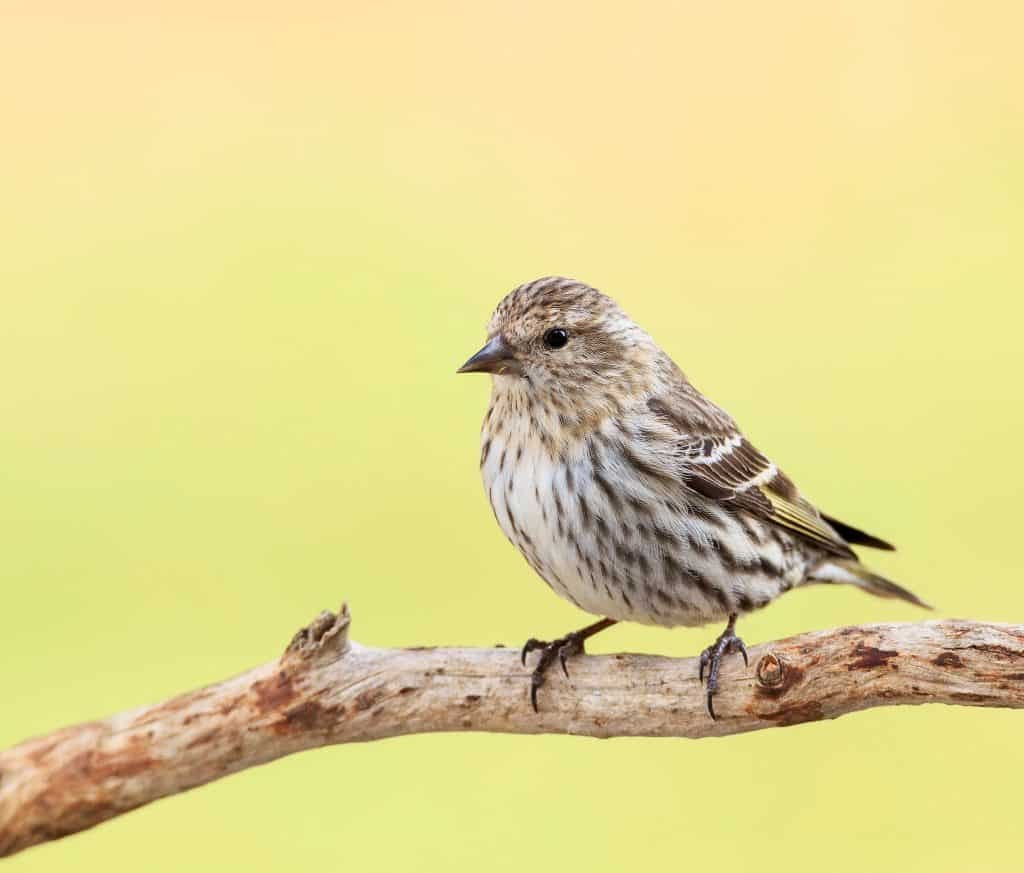
This is another Canadian breeder who maintains a winter presence throughout the U.S.
It resembles a goldfinch in size and shape but has distinct coloring that sets it apart.
The underside is the common white with brown accents found on many birds, but its backside is a combination of contrasting grays, blacks, and yellows that really pop on its wings.
Some morphs accent this with a subtle gathering of rose-colored feathers near the face, but this is rare. It forages in low-lying vegetation like shrubs and bushes but will hang out near bird feeders if the sunflower seeds are well-stocked.
A sociable bird, it is not uncommon to see siskins flocking with songbirds or even other finches.
5. Red Crossbill
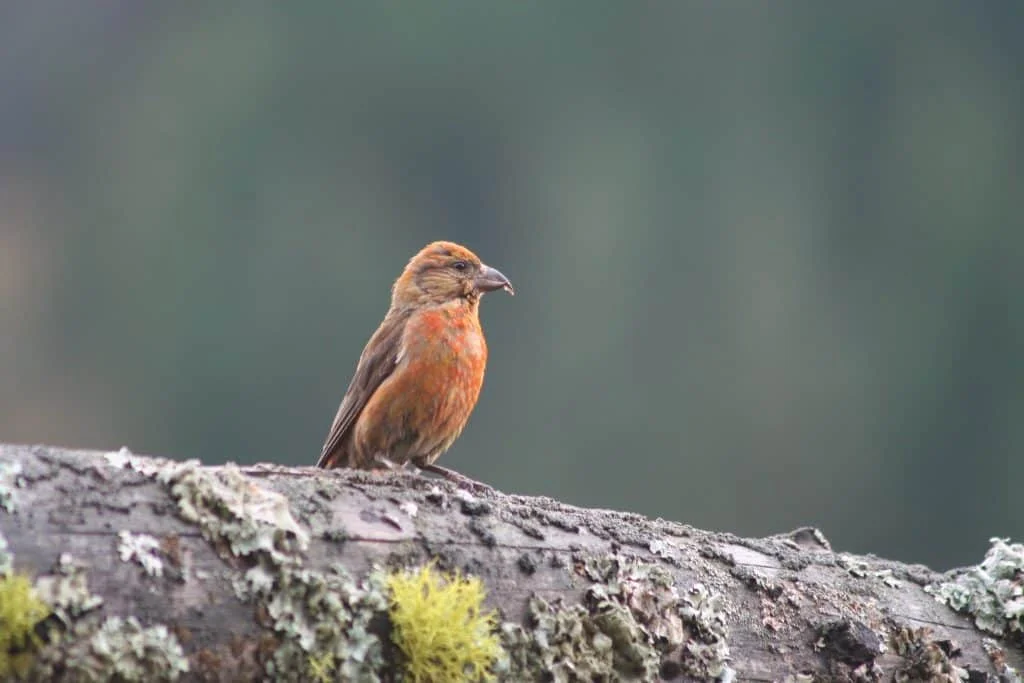
Despite its look and its name, this is indeed a portly member of the finch family. It is one of the migratory birds that gather in nearby places like the Virginias and the Carolinas, likely stopping in New England on its way to Canada.
You can find red crossbills in tall pines where there are plenty of natural seed deposits. Look for the distinctive red coloring that covers all parts of its body from crown to base, with a darker shade of crimson on the wing.
Females are more yellowish with red accents, while molting youths may be entirely gray.
The crossbill’s trademark name comes from its beak, which is hooked on the top and bottom, crossing at the tips instead of laying flush like most birds when its mouth is closed.
References
- https://www.audubon.org/field-guide/bird/american-goldfinch
- https://www.audubon.org/field-guide/bird/purple-finch
- https://www.audubon.org/field-guide/bird/house-finch
- https://www.audubon.org/field-guide/bird/red-crossbill
- https://www.audubon.org/field-guide/bird/pine-siskin

About Us
We are avid bird-watchers who recently retired, allowing us more time to travel the world. Fortunately, we have managed to visit numerous countries around Europe, Asia, and America. Watching and photographing birds has been a passion for many years and we are making the most of the extra time on our hands!
